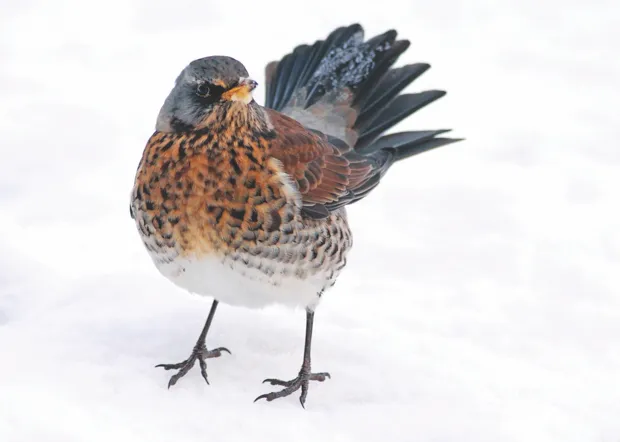Put your winter boots on and make a cup of hot coffee; it’s time for the 40th RSPB Big Garden Birdwatch. Over the past four decades, enthusiasts have popped outside for an hour in mid-winter to document the birds that land in their gardens. (If you can’t face the cold, you can stay inside and watch from a window!) Since 1979, 130 million birds have been counted in what’s become the largest garden wildlife survey in the world.
Plus, the Big Garden Birdwatch provides invaluable information to the scientists at the RSPB. It alerted them to the increasing numbers of collared doves and wood pigeons, but declining populations of song thrushes and starlings. Among other things, the RSPB uses that data to encourage the public to plant shrubs or build particular features in their gardens to create more hospitable habitats for the birds that aren’t doing so well.
Four birds to look out for this year
1
Goldcrest

These are one of the UK’s smallest birds, weighing just five to six grams – about the same as a 20p coin. They are native to the UK, but large numbers also migrate here from Scandinavia in the winter. They arrive at the same time as migratory woodcocks, so they were once thought to ride on the backs of the larger birds, earning them the nickname ‘woodcock pilots’. Lots of goldcrests nest in the UK, with over 600,000 pairs breeding here annually.
2
Waxwing

Large numbers of waxwings flock to the east coast of the UK in ‘waxwing winters’, when there aren’t enough berries to feed them in their native forests of northeast Europe. They have an endearing breeding ritual, where a male and female pass a berry back and forth, strengthening the bond between the pair. If you want waxwings in your garden, trying growing shrubs and trees with berries – rowan and guelder rose work particularly well.
3
Fieldfare

These large thrushes visit the UK every winter, to escape the harsher Scandinavian weather. They usually feed on berries and other fruit, or worms if the ground is soft enough. Last year they flocked to UK gardens in large numbers during the ‘Beast from the East’, because their natural food sources had run out or weren’t accessible during the chilly weather. When temperatures plunge, you can help them by putting broken-up apples or pears on your lawn.
4
Starling

Like goldcrests, starlings are native to the UK, but their numbers are boosted in the winter by warmth-seeking visitors from Scandinavia. Starlings are excellent mimics, copying the calls of other birds, as well as sirens and mobile phone ringtones. You can attract starlings to your garden by keeping your lawn short and chemical-free, which allows the birds to safely poke around for leatherjackets (cranefly larvae) – their favourite food.
Follow Science Focus onTwitter,Facebook, Instagramand Flipboard
